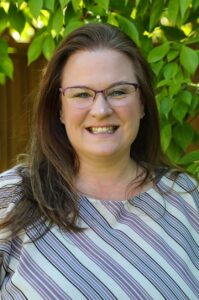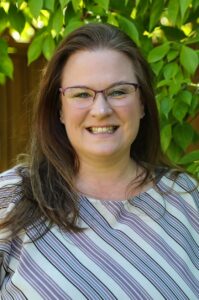Craniosacral therapy…have you ever heard of it? I hadn’t until our lactation consultant highly recommended we do it after our youngest had her lip and tongue tie released, and now I’ve not only taken my youngest but also my oldest, and I’ve even had craniosacral work done on me!
I can’t wait for you to learn more about craniosacral therapy, and it’s from our very own favorite craniosacral therapist, Keri Smith, owner of Nurturing Touch and Wellness in Northern Virginia.
In this post, you will learn:
- What craniosacral therapy is
- What craniosacral therapy can help babies with
- How craniosacral therapy can help babies who have a tongue, lip, or cheek tie
- How craniosacral therapy can help when babies have a high palate
- How to find a trusted craniosacral therapist for your baby
And so much more!
Introduce Yourself!
My name is Keri Smith, I own Nurturing Touch and Wellness in Sterling, Virginia. I have been a massage therapist for 22 years and a craniosacral therapist for over 10 years now.
I tend to focus more on babies – I do a little massage, a lot of craniosacral therapy, as well as some visceral manipulation.

I decided to become a craniosacral therapist after seeing how much it helped my daughter when she was younger. At just 6.5, she suddenly lost hearing in one ear and I wanted to do everything I could to help her regain her hearing, while also avoiding tubes, adenoid surgery, and other medical interventions, if at all possible.
My friend is a chiropractor and craniosacral therapist, and a few hours after her first 15-minute session with Hailey, she heard me whisper for the first time in six weeks. I then found someone in our area who could continue to work on her, and after a few sessions, I decided I wanted to become certified and be able to provide the same service!
What is Craniosacral Therapy?
Craniosacral therapy was founded in the 80’s by Dr. Upledger. The whole idea behind craniosacral therapy is our entire body is surrounded by fascia, and I like to describe fascia like saran wrap – it’s really hard to iron out saran wrap.
But any time our body experiences some sort of trauma, whether that’s physical, mental, or emotional trauma, that fascia gets tighter and tighter, which means that our muscles get tighter and tighter, so it affects the whole body.
And while something like a deep tissue massage can work on those muscles, if the fascia (or surface) is tight, muscle memory is going to squeeze those muscles right back after a few days, like you never had anything done to start with. We have to get that fascia layer to relax first to see a lasting difference.
So craniosacral therapy is essentially a really gentle way to iron out the fascia so that muscles can expand and function the way they need to – you can breathe better, your organs move more easily, and every part of the body can release and relax. Your body can fully function the way it’s supposed to!
When you’re watching it be done, craniosacral therapy doesn’t look like much, as it’s super light touch, but it’s a powerful way to create change in the nervous system and the entire body. The goal is to help the body get out of fight or flight and go into parasympathetic mode.
What can craniosacral therapy help babies with?
Craniosacral therapy is multifaceted and can help with a variety of challenges, for both adults and children. When it comes to babies and young kids, craniosacral therapy can help with:
- Birth trauma (especially if a baby needed a vacuum or forceps to come out, or a c-section)
- Babies who spent time in the NICU
- Torticollis (babies who have a head turn preference; we want to get their neck and cranial bones moving to avoid any flat spots)
- Latching challenges (whether that’s due to oral restrictions or not)
- Chronic ear infections
And more!
The idea behind the cranial rhythm is that our bones are all supposed to move together and in sync with one another. If there is any restriction in that movement, the neurons that should fire and hit each other just end up bouncing off other areas. So sometimes babies who cry all the time, are hard to calm, or who only have small bursts of sleep are struggling with a nervous system that can’t regulate.
Craniosacral therapy can help all of those rhythms back into place, and can also come alongside chiropractic care and other forms of body work families have already tried.
We are taught to help the “inner physician”. We are basically helping your body get out of the way so it can do the healing it was made to do.
When it comes to newborns, birth is a beautiful yet physically traumatic process for babies; even being in utero for nine months can create some tension. So simply doing craniosacral work on an infant to help release any tension and help their muscles and bodies start fresh at square one is so beneficial.
How can craniosacral therapy help babies with oral ties?
The tongue is an important muscle when it comes to many daily functions, but thinking about babies, especially, eating is a very important job for the tongue! The tongue and other oral muscles work together to eat well.
As a craniosacral therapist, my job is to release the tension of the tongue and other oral-fascial muscles so they can all work together smoothly.
A lot of providers who are helping to identify oral restrictions have started sending their patients to craniosacral therapy first, before the rabbit hole of tongue and lip ties. If muscles are just holding the tongue so tightly and you release those muscles, you should see a difference within about 20 minutes, but at most, 3-4 days. And the improvements should just continue.
For example, some moms come to me with pain while they nurse, and after working on their baby they leave without any pain nursing…awesome!
If, however, we do the craniosacral work to release those muscles and the tongue still can’t figure out what to do, or if the previous progress starts to get worse again, it’s probably a restriction that needs to be looked at more specifically.
When babies are going to get a lip, tongue, or cheek tie released, I ideally like to see them before the release, to prep the body and release as much of that fascia as I can. I then like to see the babies again 10-14 days after the release, because there is a natural tightening of the fascia simply from the procedure and uncomfortable stretches done as aftercare; getting the release naturally creates more tension that we want to release again!
If I’m not able to see a baby before the release, I certainly want to see them after!
Why is it important to do craniosacral work inside the mouth when it comes to oral restrictions?
There are some chiropractors who do craniosacral work and it’s so helpful, but most don’t go into the mouth, specifically.
However, there are certain muscles, like the tongue muscles, that we can’t fully get to outside the mouth. When you think about all of the muscles in the mouth that help us talk, eat, nurse, etc, you can’t fully reach all of those outside of the mouth. You also can’t work on the palate unless you go inside the mouth.
It’s also important to go into the mouth because some oral restrictions can simply be released with craniosacral therapy! Sometimes a tongue tie is just a muscular restriction, so craniosacral work is a gentle and effective way to see if the muscle just needs to be released, or if there is actually a tether.
Craniosacral work generally takes 3-4 days for the body to fully acclimate and adjust to the release, but we often see a change in just 20 minutes!
How can craniosacral therapy help babies with high palates?
Babies’ palates take time to solidify. There is the hard palate and the soft palate, and so many bones up there that are still forming and solidifying. The vomer bone, for example, is a bone on the palate that essentially holds everything together at the top of the palate, but sometimes it can get “stuck.” With craniosacral work, we can make sure that bone is moving so the palate can form well.
Doing craniosacral work on the palate also helps prepare the palate for the tongue. Ideally, all of our tongues can reach our palate and rest there, and for babies, the tongue actually helps the palate form its shape; the tongue helps bring the palate down. High palates can lead to feeding issues, such as clicking due to extra air intake, so we want to help create space with the palate so all of those muscles can work together as they’re supposed to.
And this is the power of early intervention! There is so much more you can do with a newborn and young baby than you can with older children and adults because everything is still forming. So taking advantage of these therapies early on is incredibly powerful.
How do you recommend people find a local and trustworthy craniosacral therapist?
I recommend families go to upledger.com and click the button that says “find a therapist.” From there, you can search by location using your zip code, city, or even state. Sometimes you have to dig a bit, or be willing to drive 30-45 minutes, to find someone close!
You then want to make sure they have completed the following classes:
- CS1 (a must!)
- CS2 (a must!)
- SER (ideal as it helps with work inside the mouth)
- PED1 (specific pediatric training)
- CPBB
And always double-check that they work with kids!
Conclusion
If this if the first you’ve heard of craniosacral therapy, it might feel kind of magical and not real life. But with the right professional, it’s actually pretty simple!
The goal of this post is to teach you what craniosacral therapy is so you know what options are out there and you can best advocate for your little one and family.
If you are pregnant or have a newborn, know that craniosacral therapy can serve your baby hugely, whether they have oral restrictions or not. We are not trying to add to the overwhelm of newborn and baby life, but to give you more confidence to know what options are available for your baby.
I also want you to know it’s okay if you have older babies and children and never had craniosacral work done on them! I (Lauren) never had it done on my older two when they were babies, and it’s okay.
Conclusion
And if you’re curious to learn more, continue our series with the following posts:
- Signs of our Baby’s Tongue Tie, Lip Tie, and High Palate
- Oral Restrictions Explained by a Lactation Counselor
- Mouth Breathing and High Palates Explained by a Myofuctional Therapist
About Keri Smith

Keri Smith grew up in Long Beach Island, NJ. She completed her undergrad studies at the University of Maryland, College Park, majoring in Psychology with a focus on child psychology.
After college, Keri wanted to work more hands-on with children and their families and she enrolled in massage school. Keri received specializations in pregnancy and postpartum massage, infant massage, and fertility and induction massage. Recently, she has turned her studies to Craniosacral therapy, Visceral Manipulation therapy, Reflexology, and essential oils.
Keri lives in Ashburn, VA with her husband Jeremy, and her two children, Hailey and Jaden.